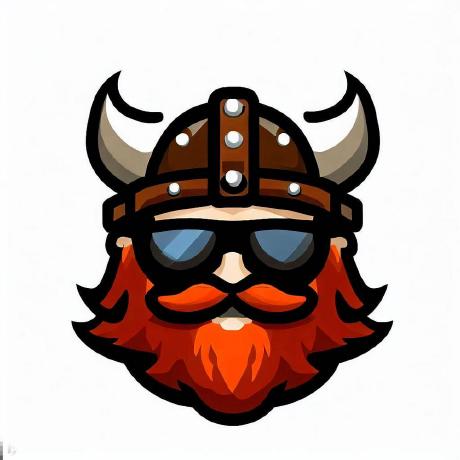I have the feeling I’ve always had a weak back.
Some 4 months ago I started working out regularly. Now I can almost touch the floor with my hands without bending my knees.
While doing this exercise I heard a small crack on my back, nothing serious.
Since then I can lift weights easier than before but my back still hurts a bit. My back doesn’t hurt as much after coming home from work, which was normal before.
What else could I do to have a stronger back?
If you have chronic back pain (not temporary, and not linked to an activity), you need to see a doctor first.
No, really. See a doctor. Because ALL of the exercises you see can seriously injure you, even permanently, depending on your exact condition. What works miracles for someone else may work backwards for you. Even if they have a similar condition, or it’s in a similar group (e g. Core strengthening)
And above all else, listen to your body. If it hurts, stop doing it.
Source: I’ve been through this the hard way
I just wanted to add to ask the doc if they’d give the green light to seeing a physical therapist. The PT was way more effective in helping me manage my back pain, whereas the doc would advise painkillers, muscle relaxers, and heat.
This, a thousand times. Also echoing what someone below said that a physiotherapist may be best, but in my country, the doctor refers to a PT.
The reason why getting proper medical input is important is because often back pain arises because of long standing, complex imbalances e.g. I had a weak core, which caused my legs to lock in a way that sort of compensated, which caused me to have an odd gait and to fall lots. Generally improving your strength was a good step, but if you’re experiencing pain like this, you may need help in identifying any underlying weaknesses.
Especially because injuries don’t just come from heavy or intensive exercise. I knew someone who had upper back pain that likely stemmed from poor posture. They identified the muscles that were painful and started doing stretches to that area. Even though it was only light intensity stretching they were doing, they were inadvertently exacerbating the root problem, which they didn’t learn until they had to be seen by a doctor urgently.
Pull-ups were the key for my back. Once I could complete a set of 10 with body weight only it was like magic. Though, I do think that the pull-ups forced me to strengthen my core, which had a major impact. Then once those muscles were able to keep up it made everything else easier too.
I’ll second the importance of core for avoiding back pain. I do mostly abs focused core workouts and that helps a lot for me personally.
Not diminishing the effects of stronger back muscles but the stretch and decompression of the spine in the hang part does it’s part. I love that bit, just hanging there getting stretched from arms to arse.
As others have mentioned, core exercises will be key here.
Some more traditional non-core exercises like squats and deadlifts will be engaging your core muscles (and a reminder that your ‘core’ is your whole trunk/body and not just your abs!), but you can progress this along with additional core exercises.
As someone that sits a lot for work, I really like to do ‘supermans’ and variations of them, a basic one is to lie flat on your stomach with arms and legs extended, then raise your arms and legs off the floor. You can hold, do them as reps, “swim” in the air, add in some pulls (like an overhead row if you have a resistance band or something you can attach in front of you).
Yoga has been mentioned below, but I would add Pilates to the list as well, there are plenty of core exercises to go at.
Yoga, specifically Hatha Yoga or Ashtanga Yoga with focus on the secondary series (there are 6 total).
I’d highly recommend to start out with classes and a suitable instructor though, there are a bunch of specific warm-ups to loosen some muscle groups and stretching certain areas that allow you to get into the required postures, trying to raw-dog those can lead to injuries if you force your stiff body into some positions it’s not used to.
If all you want are basic exercises to cycle through on a daily basis, 4-8 weeks of guided training is already enough to know what and how to do, you can continue with youtube from then on.
Yoga, for sure. I used to think it was just women stretching. Now I know it’s for everyone, and it’s more about strength than stretching. There are muscles that get worked in yoga that I have never known was there through mainstream weight lifting and strength training. Specifically my core and lower back. It’s made a difference, although it took about a year for me.
Hit up exrx.net and look for weight lifting exercises that target back muscles specifically. For lower back (erector spinae), thing like weighted hyperextensions are going to target it specifically. I would suggest doing about 12 weeks where you start you back workout with basic compound lifts–deadlifts, squats, bent over barbell rows–and progress to more isolating lifts like hyperextensions at the end of the workout. I would suggest doing that 12 weeks with just 1-2 sets of 12-15 reps for each exercise, with rests of 30-90 seconds between sets and exercises; that will get your body ready to progress to more sets at higher weight and reduced repetitions. And yes, you need to change you workout every 3-4 months or so; that’s a basic principle of periodization. Changing your workout will mean more or fewer sets, with lower or higher numbers of repetitions, and different weight. In general, you’ll do a few sets of high repetitions with lower weights, and more sets of low repetitions with higher weights.
Also, don’t forget to do abdominals; those are important stabilizing your back.
For cardio, rowing is going to be your go-to choice for a strong back.
I would strongly suggest getting a personal trainer for a few sessions specifically to work on your form for squats, deadlifts, etc. If you do that though, be very, very firm with them that the only thing you want is direction on form; PTs will have a strong tendency to try and sign you up for months or years of training that may or may not help with your specific goals. Look for trainers with ACSM or NSCA certifications only (most other certs are barely worth the paper they’re printed on), ans a BS in kinesiology or exercise science.
Aight, a lot of what goes into keeping your back musket healthy isn’t specifically using the back muscles. I spent years power lifting, and even longer doing general strength training. That still didn’t prepare me for life after a major series of back injuries.
First thing to realize is that your core contributes to a healthy back. So you can’t skip that.
Second thing is that you don’t ever exercise back muscles without stretching first. You have to work that in so that before you ever do any weight based exercise with the back, it’s limbered up and the muscles are “warm”. And that goes for body wbeight, not just lifting.
Third is that you need to adjust your back exercises and your front exercises. You don’t want to get your pecs stronger than your lats and upper back can balance, you dig? Later on, you can worry about increasing strength to different muscles like the pecs and get them bigger. But the first year or two of building your body into a healthy state, don’t go crazy with the front of your body. What happens is that you’ll be doing stuff and your back can’t support the movements properly, leading to injury.
Now, specific exercises. I like the superman a lot for early stages. You’re belly down, arms extended above your head. You then lift your legs and your upper body. Kind of like the inverse of a situp. Hold for a three count, then back down.
Rows are great for the upper back. Bent over rows in specific. Start with low weights. Anything like a can of food is good for beginners.
Side planks are bomb. They also help with keeping things balanced as you aren’t only engaging back muscles. Regular planks are a solid pick as well.
Overhead lifts with light weight, like a can of food. It focuses more on the trapezius, but it’ll also work out everything connected to the shoulders to some degree.
Add in some squats, without weight, to connect it all to your base, and you’ve got it all balanced with “leg day” as well as core day.
Remember, the key to preventing back pain and injury is warming up. Doesn’t matter if you’re doing body weight, power lifts, intensive yoga, martial arts, whatever. You want the back loose and with the blood flowing before you start adding in anything that makes the muscles work hard.
The McGill Big Three for starters?
Then deadlifts, RDLs, Lat Pull Downs, rows. Deadlifts are great for your erectors but the fatigue is a lot so you’re probably better of with RDLs.
I’m on the yoga train. Specifically downward dog into a bunch of cat/cow’s mixed in with other stuff.
Yoga in general and deadlifts are what I do. Back extension in both directions laying on your belly on a bench is good for strengthening it safely, start with small range of motion and extend it as you can.
Remember a few things - we spend more time bent forward than back, so make sure to strengthen the back in the arched direction as well. The whole body is connected so develop it in a balanced way. And move in every direction (intentionally). That last one is what yoga is so good for.
Sun salutations every morning.
Consider a sports massage as well. Fair chance you have some knots going.
I’ve been shaving since I was 12 years old (I’m 40 now). For most of those shaving years, I liked to get really close to the mirror, to ensure I didn’t miss a spot, so I always leaned far over the sink to get that close shave.
Unbeknownst to me, spending decades leaning unsupported over the sink for 7-10 minutes every morning gave me very strong lower back muscles, which also helped to stabilize my core. I never had back problems, even when all my friends, family, and coworkers started to develop back pain later in life.
About 7 years ago, I discovered the wonders of shaving in the shower. I put a small mirror on my shower wall and shaved without all the additional hassle of cleaning a sink and counter. It was wonderful… except I wasn’t doing my morning lower back routine because I could stand upright, right next to the mirror. My lower back started getting weaker over time.
About 4 years ago, I slipped while going down my stairs and landed hard, injuring my back. I used to be able to bounce back from a fall like that, but I actually had to go to the ER to ensure I hadn’t broken something; I couldn’t even sit up straight without pain.
The pain lessened but never really went away and I found myself finally stuck with permanent back pain.
I’m considering getting rid of my shower mirror and shaving over the sink like I used to, to help rebuild my lower back muscles and better support my spine. My wife deals with permanent back pain thanks to degenerative disc disease, and the things that helps her the most is building a stronger core and lower back muscles, to take the support away from the areas that want to cause pain.
I’ve been doing heavy squats and deadlifts for the past 15 years and I’ve never experienced back pain. I can’t for 100% certainty credit lifting for this but I’d be amazed if it doesn’t play a factor.
EDIT: And hanging. You don’t even need to do pull-ups. Just get a bar from which you can hang daily. It decompresses your spine but also flexes your shoulders. We’re apes after all and hanging is what they do all day every day.
Hanging is pointless. Your spine decompresses when you’re laying down. You’re doing this every night when you sleep.
Complete waste of time with no positive health benefits you say?
Not necessarily a stretch or workout that I’m going to suggest, but more if you’re exercising get help from someone who knows good form.
I got into doing sit-ups/core strength exercises as a teenager, alongside bad form and bad sleeping/living conditions + stretchy ligaments have completely ruined my back.
The first thing that’s actually started to help in a way that doesn’t cause other issue has been seeing a physiotherapist, who worked with me to identify exactly which muscles were stiff, which muscles were over stretched, range of movement, etc…
And then walked me through what exercises and and positions would actually help with my difficulties.
Otherwise a massage gun used properly can be a game changer, but same thing, if you have a partner, ask them to help you out; don’t over stretch trying to fix things.






